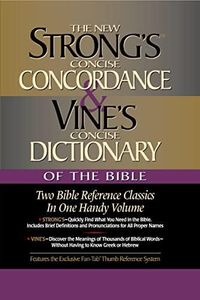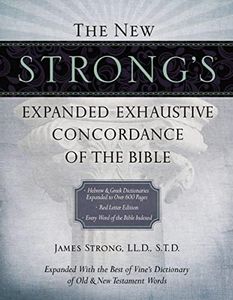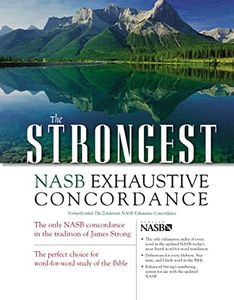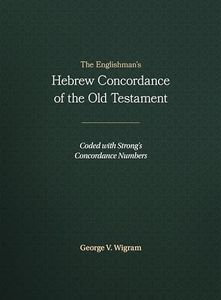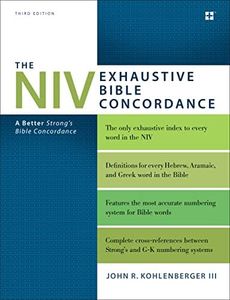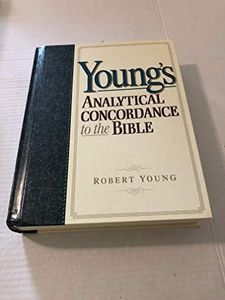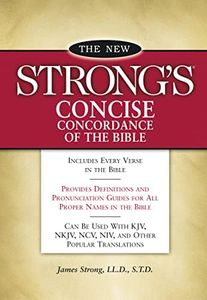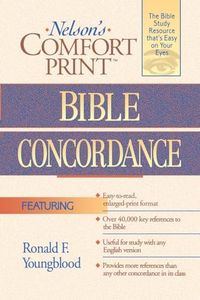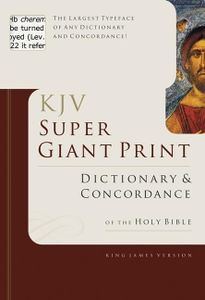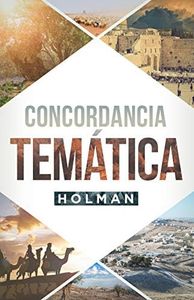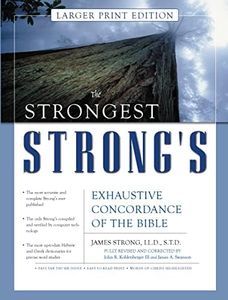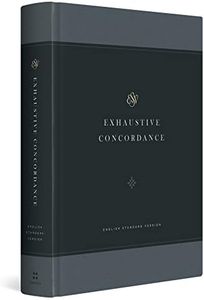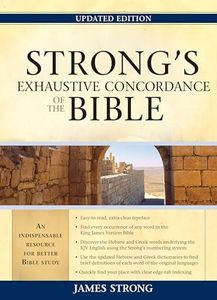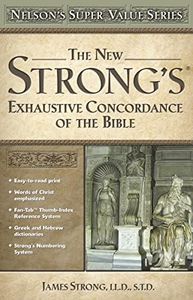We Use CookiesWe use cookies to enhance the security, performance,
functionality and for analytical and promotional activities. By continuing to browse this site you
are agreeing to our privacy policy
10 Best Bible Concordances
From leading brands and best sellers available on the web.Buying Guide for the Best Bible Concordances
Choosing the right Bible concordance can greatly enhance your study and understanding of the scriptures. A concordance is a tool that helps you easily find references to specific words, themes, or passages within the Bible. When selecting one, it's important to consider how you plan to use it: whether for quick lookups, deep study, teaching, or personal devotion. By understanding the most important features and differences, you can pick a concordance that best matches your needs and helps you explore the Bible more effectively.Coverage (Complete vs. Abridged)Coverage refers to how comprehensive the concordance is in listing every word or just the major words in the Bible. A complete (or exhaustive) concordance includes nearly every word found in the scriptures, which is helpful for deep study and thorough searches, while an abridged concordance focuses on more common or significant words, making it lighter and easier to use for quick referencing. If you want to explore every mention of a word or do deeper research, an exhaustive concordance is ideal. On the other hand, if you only need help finding key passages or conducting casual study, an abridged version is usually enough.
Translation MatchA concordance is specific to a particular Bible translation, such as the King James Version (KJV), New International Version (NIV), or others. This matters because the words used can differ from one version to another. Always choose a concordance that matches the translation you read or study from. This ensures the word listings and references are accurate and relevant to your Bible.
Navigation Tools (Indexes, Cross-References, and Guides)Navigation tools include extras like alphabetical indexes, cross-references between words or themes, and guides explaining how to use the concordance. These features make the concordance easier to use and more helpful, especially for beginners. If you’re new to Bible study or want help finding related verses and meanings, look for concordances with robust navigation aids. More experienced users might need fewer extras, focusing instead on raw listings.
Original Language ReferencesSome concordances offer information about the original Hebrew or Greek words behind the English translation, sometimes through numbering systems like Strong’s Numbers. This is important if you want to dig deeper into the root meanings of words or do word studies beyond the English text. If your study is more advanced or you’re interested in original meanings, pick a concordance with these features. Otherwise, a basic English concordance is typically sufficient.
Print Size and PortabilityThe physical size and print quality can vary widely. Larger, exhaustive concordances are often heavy and use smaller print to fit all the information, while compact or abridged versions are lighter with bigger print for easy reading. If you plan to carry the concordance to church, study groups, or travel, a portable version with readable print is preferable. If you’re using it mainly at home and need depth, a larger version may be more practical.
Digital vs. Print FormatConcordances are available in both traditional print and digital formats. Digital versions provide fast, searchable access and sometimes extra linking to Bible texts, while print editions offer a tactile experience and can be easier for those who like working with physical books. If you value speed and convenience, or want to integrate with Bible study apps, consider a digital concordance. If you prefer reading from paper and highlighting or writing notes by hand, a print concordance is a better fit.
